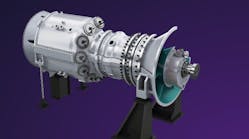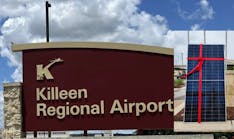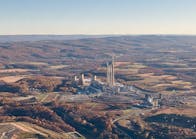Heirloom Unveils Commercial DAC Facility in California to Capture Already-Emitted CO2 from Atmosphere
Heirloom and the U.S. Secretary of Energy, Jennifer M. Granholm, have announced a commercial Direct Air Capture (DAC) facility in Tracy, California using limestone rocks to capture already-emitted CO2 from the atmosphere to minimize the impacts of global climate change.
The facility is fully powered by renewable energy supplied locally by Ava Community Energy and constructed with union labor in partnership with local affiliates of the State Building Trade Union, including UA Plumbers & Pipefitters (Local 442) and the International Brotherhood of Electrical Workers (IBEW 595).
The facility has been operational for about 1,000 hours and captures atmospheric CO2 to be permanently sequestered in concrete through a partnership with CarbonCure Technologies.
The facility has a capture capacity of up to 1,000 tons of CO2 per year and will deliver net removals to early, catalytic buyers of Heirloom’s CO2 removal credits, including Microsoft, Stripe, Shopify, and Klarna.
The limestone is heated to extract the CO2 using a renewable-energy-powered kiln, leaving a mineral powder ready to absorb more CO2. The powder is spread onto vertically stacked trays and acts like a sponge to pull CO2 from the air.
Once saturated with CO2, the material is returned to the kiln where the CO2 is extracted and the process starts again. The captured CO2 gas is permanently stored safely underground or embedded in concrete.
“The capacity of Heirloom’s limestone-based technology to capture CO2 from the air has gone from 1 kilogram of CO2 to up to one million, or 1000 metric tons, in just over two years,” said Heirloom’s CEO and Co-Founder, Shashank Samala. “We owe it to every climate vulnerable citizen to continue to deploy our technology at the urgent pace required to reach billion-ton scale and beyond in time to stop the worst of climate change.”
The facility is operated using Heirloom’s principles for the responsible deployment of carbon removal, which states that neither the removed CO2 will be used for enhanced oil recovery, nor will any equity be granted to companies having business in oil and gas production.
Heirloom aims to remove 1 billion tons of CO2 from the atmosphere by 2035, representing 20% of the current annual U.S. emissions and 10% of global carbon removal required annually by 2050.
The announcement supports America and California in their efforts to keep global temperature rise to 1.5°C. The DAC facility will fulfill commercial removal purchases, helping U.S. and California to deploy critical climate solutions to meet President Biden’s 2050 net-zero goal and California Governor Gavin Newsom’s 2045 state net-zero targets.
Heirloom also announced a community governance model to be introduced in January 2024 where community groups will be summoned by nonprofits across the City of Tracy and the broader San Joaquin County to bring together the climate technology industry and local concerned citizens.
This process will gather routine community feedback on the facility and its operations and help Heirloom in efforts to provide financial and programmatic investments in community organizations.





